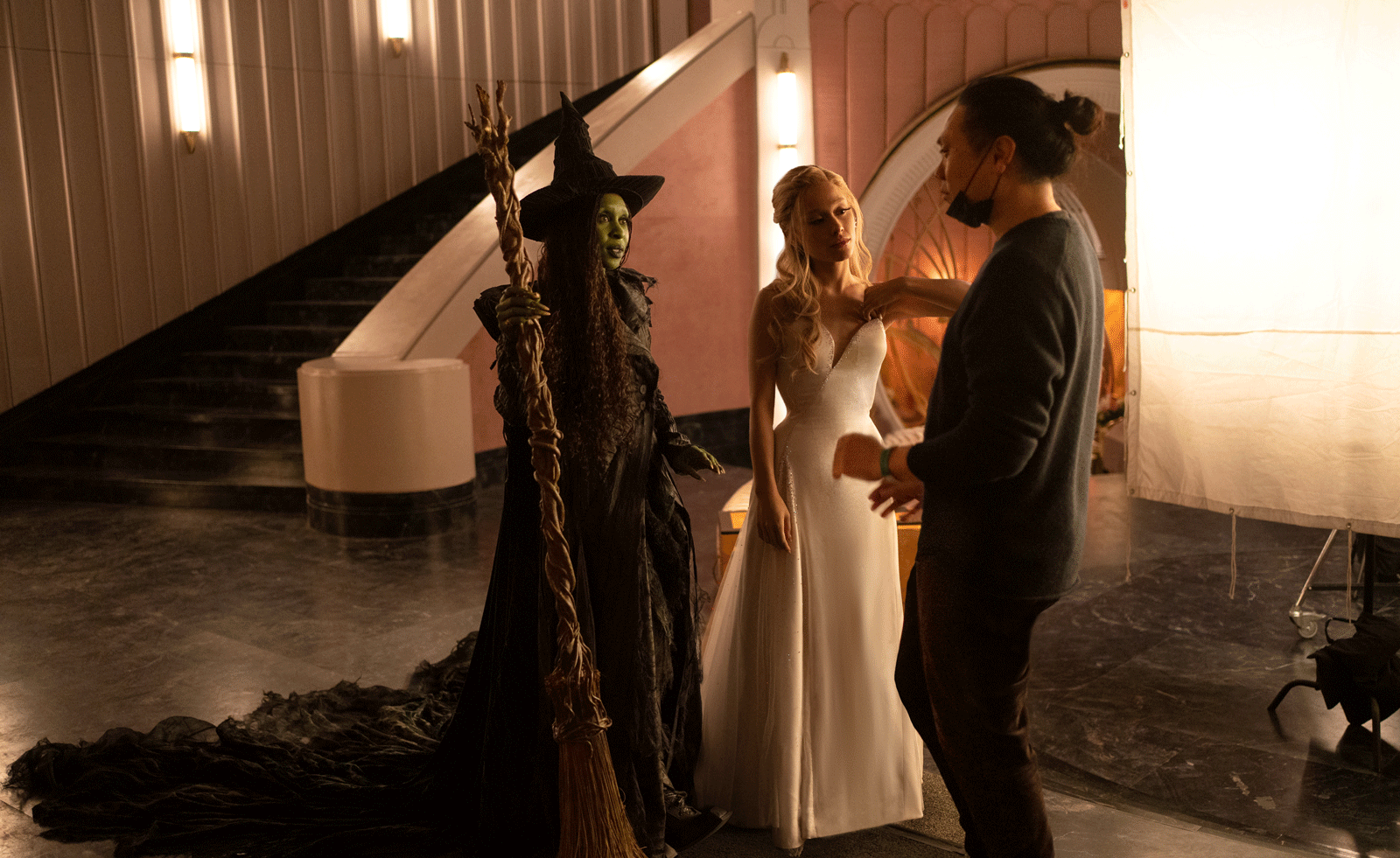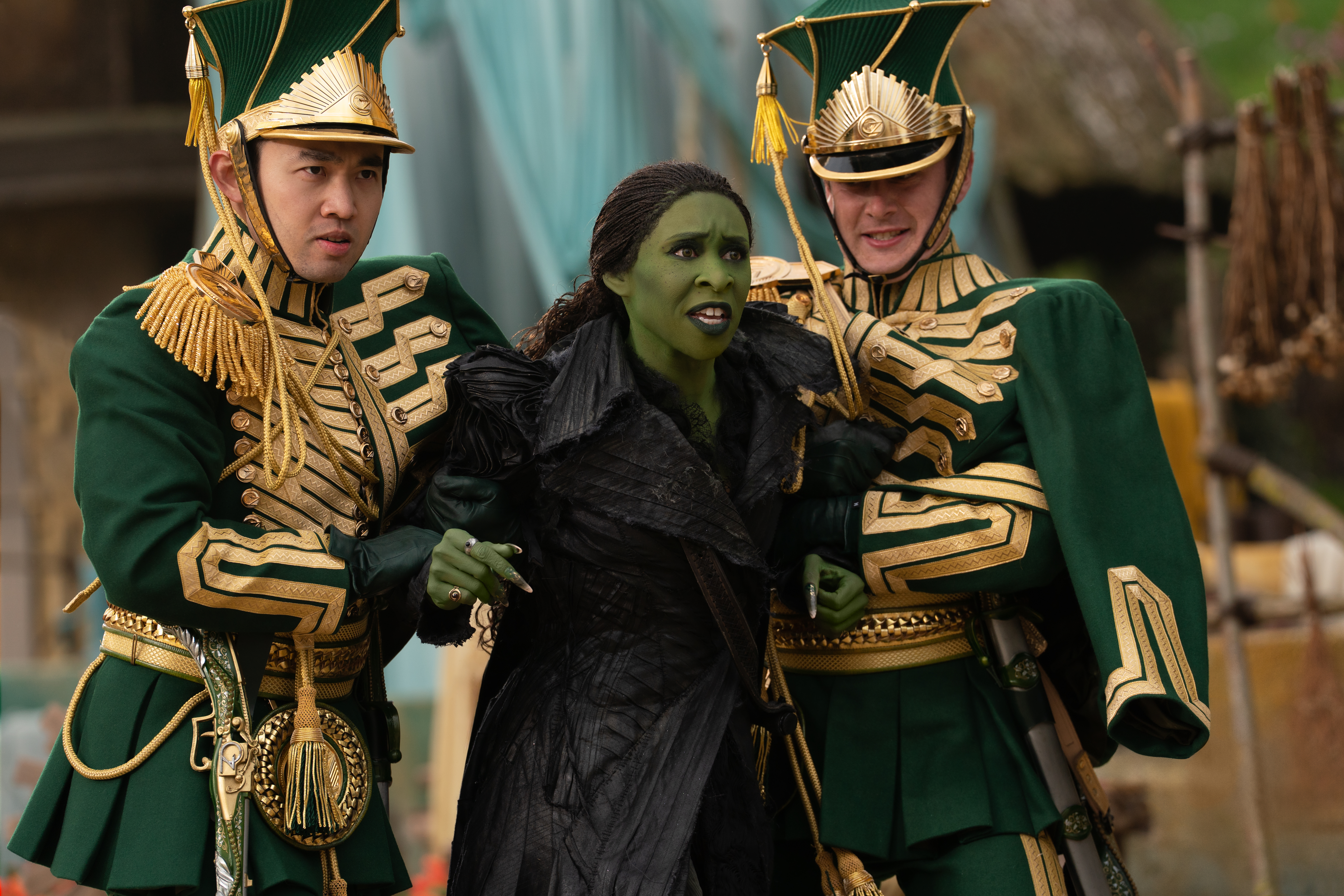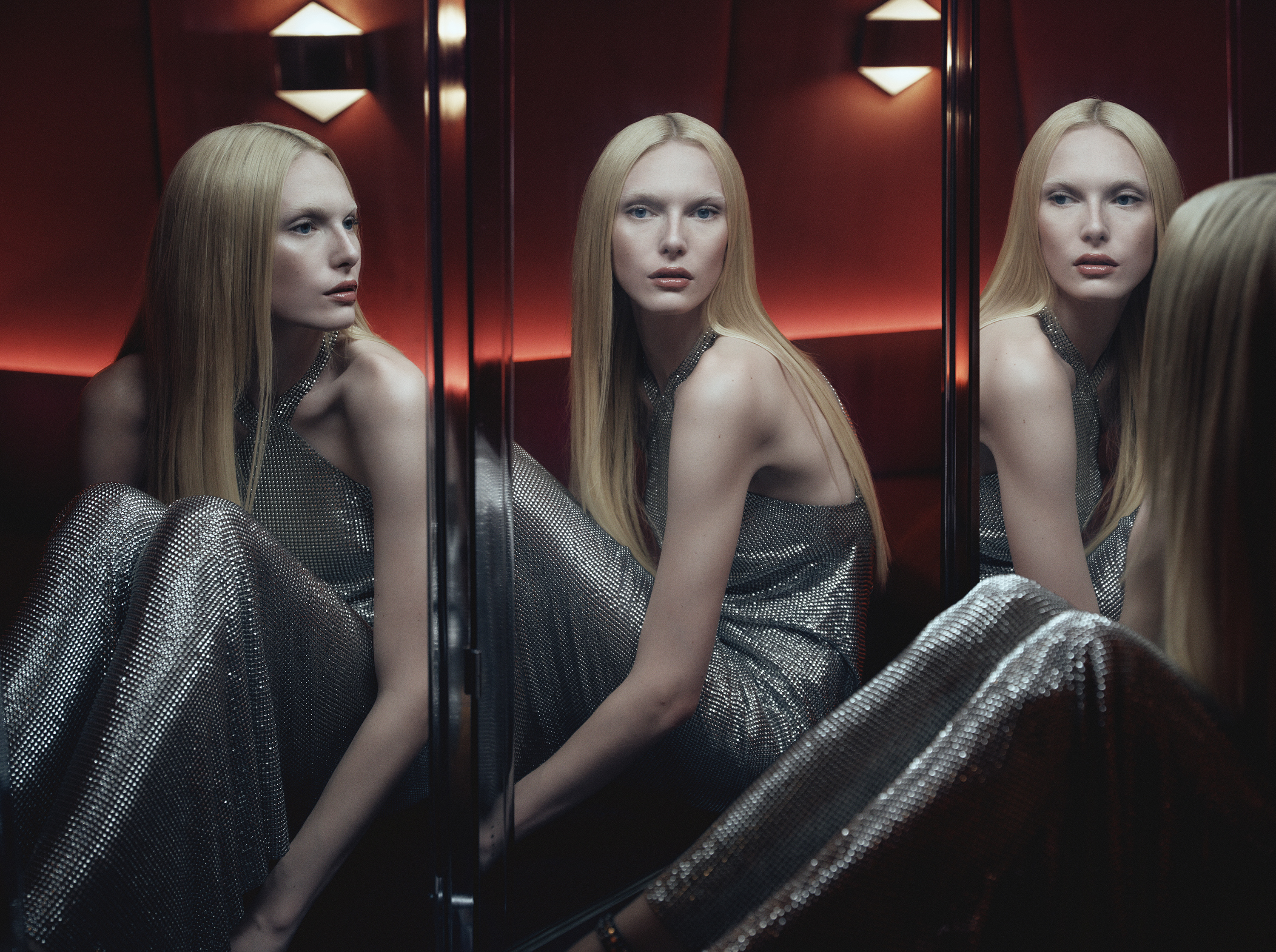Inside the world of Wicked: 'We have to redefine the yellow brick road as a form of oppression'
With the second instalment of Wicked looming, Production Designer Nathan Crowley shares the challenges of bringing the magical world to life

Wicked is back, and with it its uncanny world of magical realism. But how were the worlds of Oz and the Emerald City brought to life? And how has Dorothy's journey been brought into the 21st century? Here, British production designer Nathan Crowley tells us what it takes to create a world both familiar and whimsical.

Wallpaper*: What were the main considerations in bringing this world to life?
Nathan Crowley: I think the main consideration was being respectful of the stage show, Wicked, and of the great history of the film. I spent every Christmas watching it with my parents, who have nostalgia about it, as do my grandparents, but my kids also all have nostalgia for Wicked. So you are trying to find a look for Oz that tells the story of this epic journey. The considerations are treading lightly and finding a way through it all and re-designing it for us, because this is the first time that Wicked has been told cinematically, so that's a long journey and we have to really start to understand what Oz is, what our theories of Oz are and what best represents it.

What were the challenges in creating worlds of good and evil in a non-literal way?
We have to redefine the yellow brick road as a form of oppression. How do we visually tell you that story? This is one of the many things that Wicked brings – it says the yellow brick road isn't what you think it is. We tell that story by showing you how it's made. They have to enslave the animals to make it. The munchkins have to get all the yellow tulips we grew and turn them into a yellow dye and make bricks with them, rather than making all the colours of the rainbow for their clothes, it’s now enforced colour to make the bricks, and all their colour is taken away. Munchkin Land becomes monotone yellow. So even when the house lands and Dorothy goes on her journey, she's really becoming an agent of the wizard. She's now working for the wizard. So it's just a very different point of view. And I think that's where you start. What are the visual signatures of showing you that oppression?

What references inspired you?
For Emerald City, it was the Chicago World Fair in 1893, where the great modernists built the White City, that's now long gone. But they built a dream. Edison and his electricity lit it. You look at Sullivan and especially Burnham, who built the White City and is the father of American modernism. The underlying thing that I took to Emerald City was a dream and the White City was a dream. And because we're an American fairy tale, I needed something like the Chicago World Fair to give me that dream.
Receive our daily digest of inspiration, escapism and design stories from around the world direct to your inbox.
With Sullivan and Burnham, their architecture was so detailed, but yet because it was en masse, it became simplistic and modern. So that's what I had to do for the Emerald City. I've got to build my green city. But I took inspiration from America, and then I had to add the whimsicalness, taking architecture that feels like it's verticality [using height in architecture] and then twisting them together. I had to form a new type of architecture, which was very exciting actually.


How closely did you work with the director and members of the production team in the design? How flexible were you required to be as the story took shape?
We had many months of prep before we even started building anything. So we worked in this visual room, all together, with Jon [M. Chu, Wicked director] and the producers. You look at it as a whole. I do everything practically and I start building with my giant construction group: it's like a piece of sculpture and it develops, like the dancers. Then the choreographer Chris [Scott, Wicked choreographer] comes in and says; 'Well I've got this idea for this dance, but I need a bridge.' Things change halfway through filming. We always develop it. And Jon would come and say, 'Oh, for this scene I need a giant fountain that rotates.' And yes, I've got a great special effects team. I can build your rotating fountain – but maybe it could open, and flowers and a balloon could come out!
On our crew, we have all the people who can do that stuff. We have engineers and sculptors and artists and prop makers who get excited because it's a challenge. So I don't do it alone. I have this army of people. At one point, we were running a thousand people in my department. And it's the most wonderful thing when everyone is moving. It's so fluid.
Wicked: For Good is released on November 21
Hannah Silver is the Art, Culture, Watches & Jewellery Editor of Wallpaper*. Since joining in 2019, she has overseen offbeat art trends and conducted in-depth profiles, as well as writing and commissioning extensively across the worlds of culture and luxury. She enjoys travelling, visiting artists' studios and viewing exhibitions around the world, and has interviewed artists and designers including Maggi Hambling, William Kentridge, Jonathan Anderson, Chantal Joffe, Lubaina Himid, Tilda Swinton and Mickalene Thomas.
-
 Ludovic de Saint Sernin launches a beauty and fashion collection with Zara
Ludovic de Saint Sernin launches a beauty and fashion collection with ZaraThe Paris-based designer unveils a collection inspired by New York City subcultures
-
 Inez & Vinoodh unveil romantic new photography series in Paris
Inez & Vinoodh unveil romantic new photography series in ParisA series of portraits of couple Charles Matadin and Natalie Brumley, created using an iPhone in Marfa, Texas, goes on show in Paris
-
 A Mexican town raises its game with Fernanda Canales’ Border Outlook
A Mexican town raises its game with Fernanda Canales’ Border OutlookBorder Outlook, a landmark community centre in northern Mexico designed by Fernanda Canales, goes above and beyond, giving hope to a region divided by the border wall